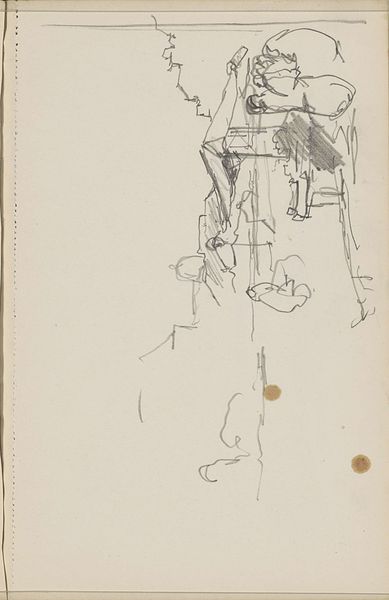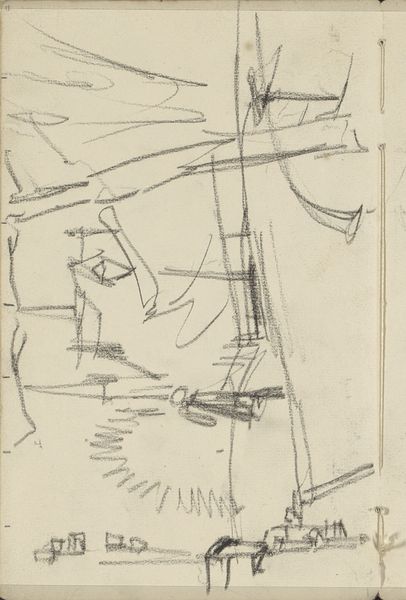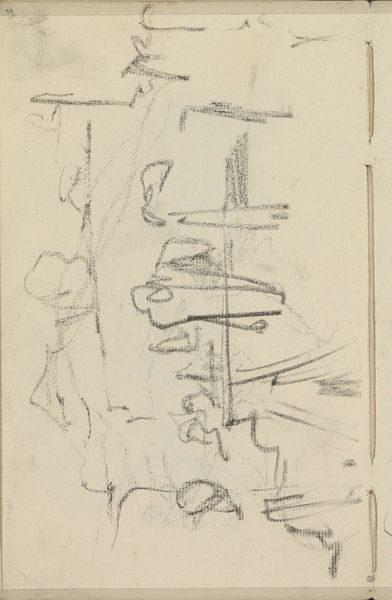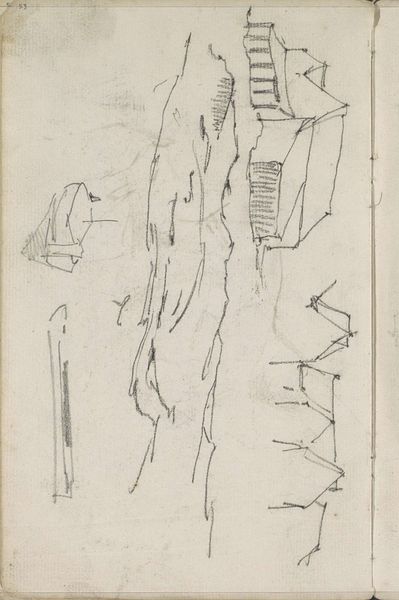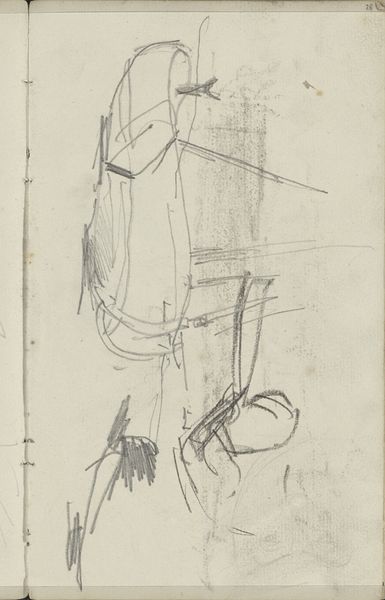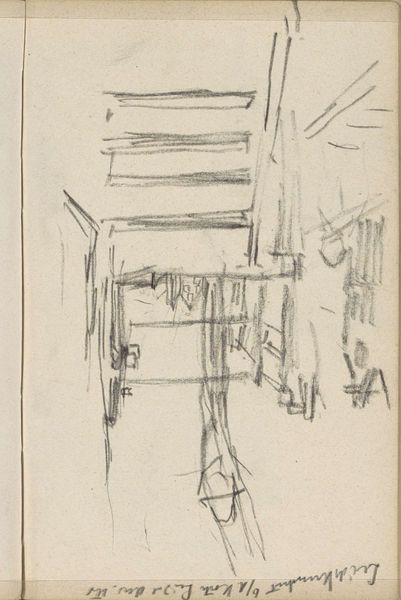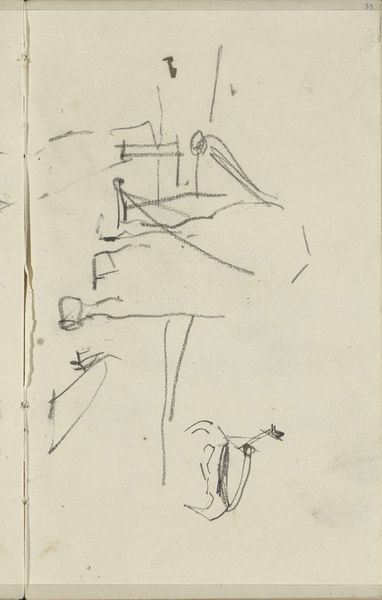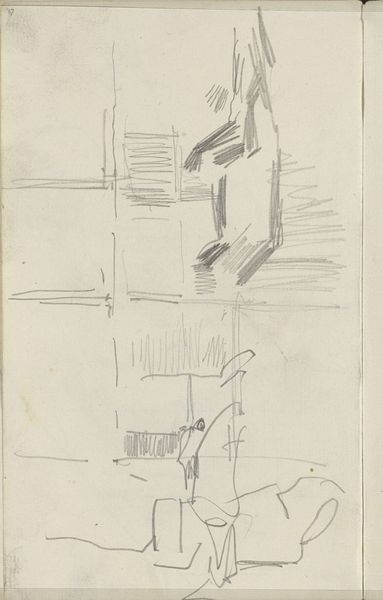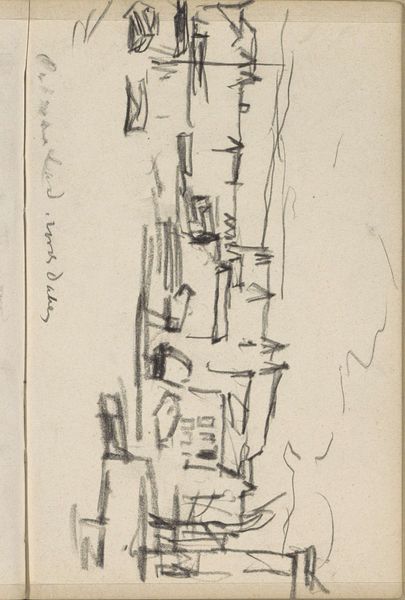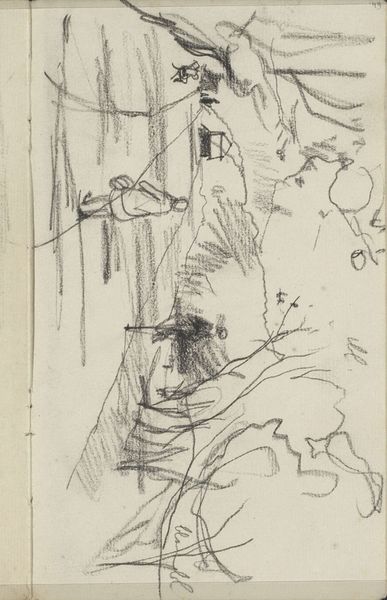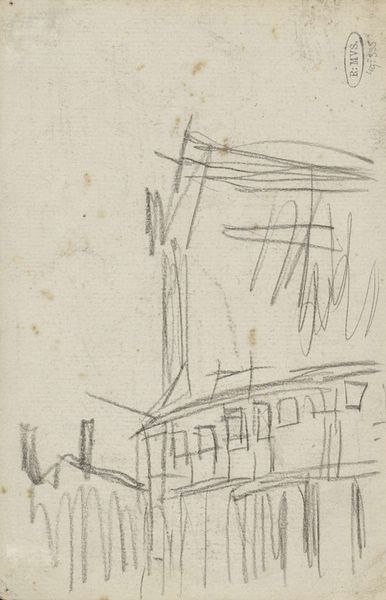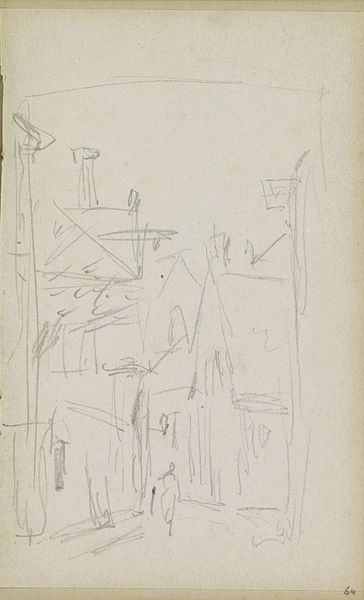
Afbraak van de kermis op het terrein van de veemarkt te Rotterdam 1881 - 1883
0:00
0:00
drawing, paper, graphite
#
drawing
#
impressionism
#
landscape
#
paper
#
graphite
#
cityscape
Copyright: Rijks Museum: Open Domain
Editor: This graphite drawing, "Afbraak van de kermis op het terrein van de veemarkt te Rotterdam," made between 1881 and 1883 by George Hendrik Breitner, captures a scene of dismantling a fairground. It feels almost ephemeral. What story do you think Breitner is trying to tell through this fragmented scene? Curator: I see Breitner reflecting a pivotal shift in the public sphere of Rotterdam. The veemarkt, or cattle market, was a central public space. A fairground demolition, like this, highlights the transient nature of spectacle and entertainment within a rapidly modernizing urban landscape. How does the "afbraak," or demolition, resonate with broader social and cultural shifts? Editor: That makes sense! The sketch-like quality makes it feel like a fleeting moment being captured. Do you think the medium – graphite on paper – adds to this sense of transience? Curator: Absolutely. Graphite allows for a rawness and immediacy, aligning perfectly with the ephemeral nature of the demolition itself. Consider how the art market, and exhibition culture, influenced Breitner’s choice of such ‘quick’ mediums to capture what could easily become ‘content’ for salon paintings. Editor: So, was he potentially capturing images of contemporary life for future, more formal works? Curator: Precisely! These glimpses into Rotterdam’s public spaces became a way for Breitner, and other artists, to participate in constructing a modern urban identity. The sketch isn't just a record, but an active contribution. What do you make of Breitner selecting the transient space of the fairground, as opposed to a static landscape or historical landmark? Editor: It seems to highlight the dynamic nature of city life – the constant building and breaking down, the ephemeral joys found in the market, especially with industrialisation rapidly gaining hold over the population. Curator: Exactly! The destruction becomes a symbol of perpetual urban reinvention, viewed, filtered and sold to the rising bourgeoisie, an insight which ultimately challenges us to reconsider how urban landscapes and socio-economic spaces inform and reflect public life. Editor: That’s given me a totally different perspective on what initially seemed like just a quick sketch. Thank you. Curator: My pleasure. I hope it sparks more thought when looking at streetscapes!
Comments
No comments
Be the first to comment and join the conversation on the ultimate creative platform.
